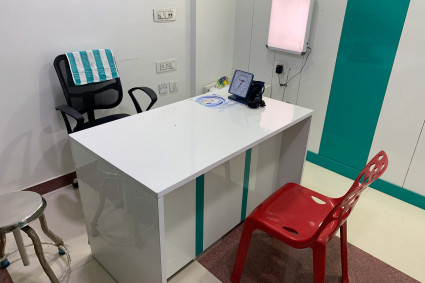Bathing helps to maintain the skin healthy and avoid infections. It's a good idea to check your skin for sores or rashes now. Bathing also makes your loved one feel cleaner and more refreshed.
The amount of assistance your loved one requires during showering is determined on his or her ability to move. You might be caring for someone who is having short-term difficulties with self-care as a result of an illness or surgery. You could also be caring for an elderly person with memory issues. It's possible that the individual has forgotten how to bathe. You could also be caring for someone who is unable to move for an extended period of time, such as a paralyzed person. When it comes to bathing, this person will require a lot more attention.
A person who has to stay in bed for a short period of time and can walk about a little may be able to shower once or twice a week with some assistance. Alternatively, the person may prefer a daily half bath at the sink or with a basin.
A bed bath with a soft bath towel is necessary for someone who is unable to move well or at all. This is commonly referred to as a sponge bath with bed bath towel, though washcloths are also commonly used. It is possible to take a full bath in bed without getting the linens wet.
You can provide a bed wash to older folks two or three times a week. Bathing more frequently can put a person at risk for skin issues like sores. Younger folks can bathe more frequently if they want to, and blood flow is not an issue for them.
Allow your loved one to clean as much as possible on his or her own. As you assist the client in undressing and bathing, use bed bath table linen and maintain a clear yet calm demeanor. For you and your loved one, bath time can be awkward and unpleasant. This is especially true if you are caring for a parent of the opposite gender. Your loved one may feel less self-conscious or ashamed if you don't appear ashamed or offended.
How do you give a bed bath?
Gather your materials
To give a bed bath, you will need:
Four or more washcloths or bath sponges.
Three or more bed bath table towels.
Two wash basins (one for rinsing, one for soapy water).
Soap (a bar of soap, liquid soap, or wipes).
"No-tears" or baby shampoo or no-rinse shampoo.
Body lotion.
A waterproof cloth to keep the bed dry.
A table or stand to hold the materials.
Prepare for the bath
Inquire if the room is too hot or cold, and adjust the temperature if necessary.
Make sure the bed is high enough to keep your back from hurting. It's fine to put your knee on the bed to reach over and bathe the individual if it's low.
To keep the bed dry, place a waterproof mat or sheet under the individual.
Make sure the door is shut and the blinds or drapes are drawn for privacy.
Some things to keep in mind
Turn the washcloth after you or your loved one has washed an area so you can use a new, clean section for the following location. When you need a new washcloth, get a new one.
Check for redness or sores on your loved one's skin while you assist them in washing. Pay specific attention to creased areas, such as the creases beneath the breasts and the folds in the stomach. Examine the groin area as well as bony parts like the elbows and shoulders.
How can I assist or give a bath?
Warm the water in two basins. One is for scrubbing a washcloth with soap and then wringing it out. The second basin is filled with clear, warm water for washing soap off using a washcloth.
Hands should be washed and dried.
To make sure the water isn't too hot, feel it with the back of your hand.
Consider whether gloves should be worn, especially if the person has been vomiting or has diarrhea. If the person has an infectious condition, such as the flu, it's a good idea to wear a mask.
Allow the individual to undress and wash as much as he or she is capable of. Remove only the garments from the region that will be washed. Uncover an arm, wash and dry it, and then re-enclose it in a shirt or gown.
Wash with a washcloth and soapy water or wipes, then rinse with clear water and another washcloth.
Begin with the portions of the body that are the cleanest and work your way down to the sections that are the dirtiest. Prepare a washcloth for your loved one to use to clean himself or herself. If the person is unable to wash themselves, you can gently wash them.
Wash the eyelids, starting from the inside and moving out.
Wash the face, ears, and neck.
Wash the arms one at a time, and then the hands.
Wash the chest and belly, including the belly button.
Wash one leg, and then the other.
Wash the feet and in between the toes.
Help the person roll on his or her side so you can wash the back side. (If you can't roll a person by yourself, get someone to help you so that you don't hurt your back.) Then help the person roll on his or her back.
Pour out the water (which by now may be cold) and replace it with fresh warm water.
Using a new washcloth, clean the genital area first and then the anal area.
If you're wearing gloves, take them off. Wash your hair and change the water. Water and "no-tears," baby shampoo, or a no-rinse shampoo are all options. Examine the scalp for any signs of redness or lesions.
To protect the skin and prevent it from drying out, use an unscented body lotion. Lotion should not be applied to regions that may become moist, such as under the breasts or in the groin folds.
As needed, assist the person in finishing their clothing.
Place your supplies in a safe place and wash your hands.
Use Stiora Bed Bath Towels For Hygiene and healthy moisturized skin. The bed bath towels or wipes are an effective alternative for patients who have trouble taking baths as recommended for surgical procedures.





